Type of incident collision Deaths Approx 60 Date 17 July 1856 Location Whitemarsh Township | Cause Human error Injuries Over 100 | |
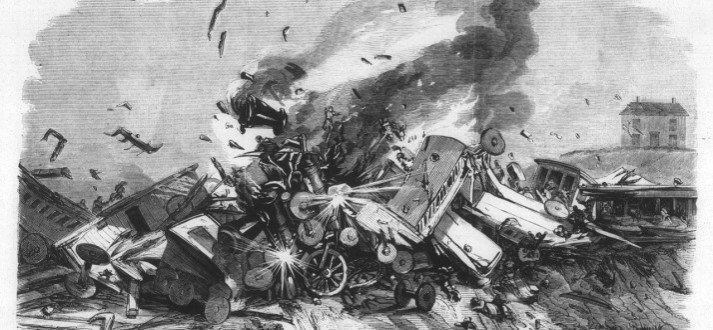 | ||
Trains 2: "Shakamaxon" and "Aramingo" Passengers "Shakamaxon": 1,100-1,500; "Aramingo": 20 Location Fort Washington, Upper Dublin Township, Pennsylvania, United States Operator Similar Wreck at the Fat Nancy, 1887 Great Chatsworth train wreck, 1896 Atlantic City rail crash | ||
The great train wreck of 1856
The Great Train Wreck of 1856 occurred in Whitemarsh Township, Pennsylvania, between Camp Hill Station and Fort Washington Station, on July 17, 1856. Two trains, traveling on the same track in converging directions, collided, killing between 59 and 67, and injuring over 100. The incident was referred to as The Camp Hill Disaster in Montgomery County, and The Picnic Train Tragedy in the city of Philadelphia. It was the deadliest railroad catastrophe in the world up to that time and became one of the signature events of its era.
Contents
- The great train wreck of 1856
- Great train wreck of 1856 investigation part 1
- A short history of the North Pennsylvania Railroad
- The disaster
- Aftermath
- References
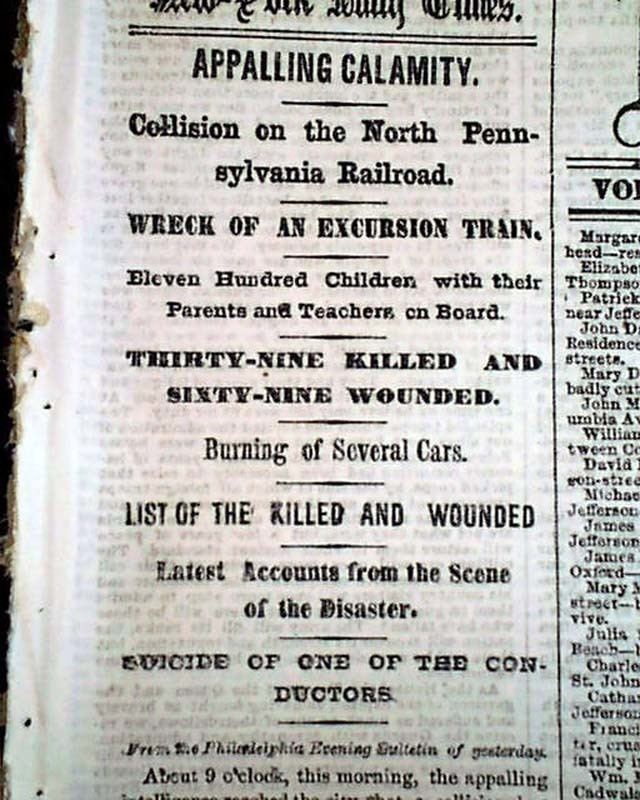
Great train wreck of 1856 investigation part 1
A short history of the North Pennsylvania Railroad

Growing impetus for the construction of a railroad connecting Philadelphia with the Lehigh Valley resulted in the incorporation on April 8, 1852, of the Philadelphia, Easton and Water Gap Railroad Company. A spur of the railroad, whose name was changed on April 18, 1853, to the North Pennsylvania Railroad Company, was formally opened Monday, July 2, 1855, with an excursion from Cohoquinoque station, at Front and Willow Streets in Philadelphia, to Wissahickon (present-day Ambler), an outlying area to the northwest. Farmers could now ship their produce more economically to markets increasingly further from home. The railroad, which transported both freight and people, was already becoming an important component of local commerce, when the wreck occurred.
The disaster
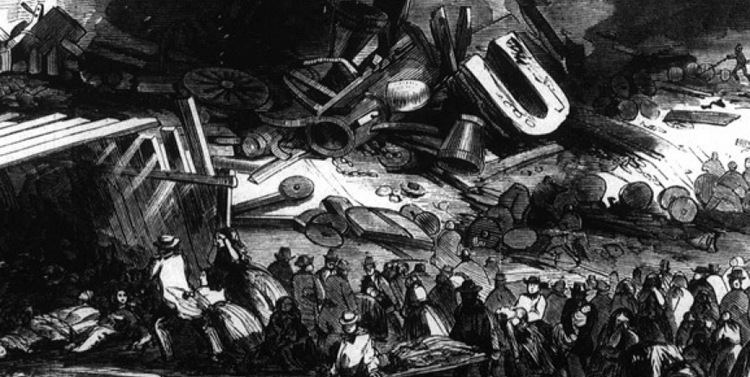
An excursion train operated by the North Pennsylvania Railroad, known as the "Picnic Special," had been contracted by St. Michael's Roman Catholic Church in Philadelphia's Kensington section to send their Sunday School children on a picnic in Shaeff's Woods, a sprawling grove near the railroad's Wissahickon station. July 17 was one of the hottest days of the year and the children looked forward to a full day at the park. The train, reported by The New York Times on July 18, 1856, as carrying 1,100 people (although there may have been as many as 1,500), was due to arrive in Wissahickon at 6:00 am. It left Cohocksink depot at Master Street and Germantown Avenue at 5:10 a.m., 23 minutes late, partly due to the large number of passengers aboard.
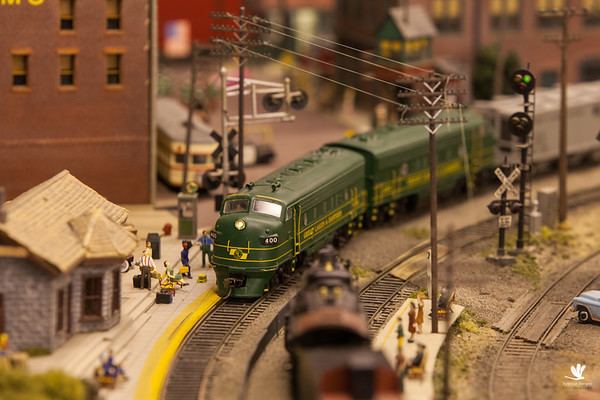
The train's locomotive was called Shakamaxon (in honor of Kensington's Native American name) and was operated by engineer Henry Harris. The engine, known for having low steam pressure, was under a sizable strain as it pulled between 10 and 12 cars overloaded with passengers. A priest, Daniel Sheridan, was in the lead car with the older children. The rear cars carried women and the younger children. The train had to make periodic stops to regain enough pressure to continue.

At the Wissahickon station another train, the Aramingo, engineered by William Vanstavoren, waited for the excursion to pass on the single track line that had opened one year and 15 days earlier. Shakamaxon was late, but the conductor did not use the telegraph to communicate with Cohoquinoque and had no idea when the excursion had left. There was a customary 15-minute waiting period for regularly scheduled trains, but the picnic special was an excursion train, which confused matters. At 6:15, the Aramingo, carrying 20 passengers from Gwynedd, pulled out of the station.
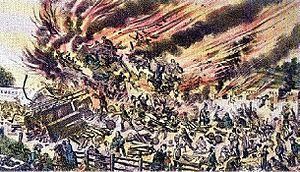
The engineer of Shakamaxon was confident he could make up for the time he had lost. He knew the Aramingo was due in the opposite direction on the same single track, but calculated they could use the siding at Edge Hill to safely pass each other. As he neared a blind curve just past Camp Hill Station, the train was travelling slightly downhill. Aramingo was rounding the same curve with the same blind spot. Although Harris blew the whistle almost continuously, the doppler effect was not widely understood at the time and, as a result, neither engineer knew exactly where the other was.

As they rounded the curve, they finally caught sight of one another. But it was too late. The trains collided at 6:18 a.m., between the Camp Hill station and the present-day crossing of the Pennsylvania Railroad's Trenton cut-off over the Bethlehem branch of the Reading Railroad.
The boilers made direct contact and the impact caused an explosion heard up to five miles away. The sounds of crashing woodwork, hissing steam, and the victims' screams and moans succeeded the first deafening noise of the explosion. The three forward cars of the picnic train were decimated and the subsequent derailment caused a fire to spread among the wooden cars. The initial impact did not kill most of the victims; rather most were caught in derailed cars that were on their sides, burning. The women and children who occupied the rear coaches, thereby escaping serious injury, jumped out, screaming in a frenzy of fear and grief.
A crowd gathered quickly from neighboring towns. The blaze could be seen for several miles and a man reportedly rode on horseback through the Montgomery County countryside and shouted to the residents: "Bring your camphor bottles, balsam and lint; there has been a horrible accident." But the heat of the burning wreckage was so intense that, even though protruding arms and legs and other parts of bodies could be glimpsed through the flame and smoke, it was impossible to get close enough to attempt a rescue.
Sandy Run, a small creek, ran about 25 feet (7.6 m) below the level of the tracks, meandering along the length of the train. A bucket brigade, equipped with tubs, buckets, pails, kettles, and other utensils, was formed down to the edge of the stream by the onlookers. But this effort availed little. The Congress Engine and Hose Company of Chestnut Hill finally reached the scene and, in fairly rapid order, subdued the flames and began to extricate the victims.
John Spencer of Camp Hill, an eyewitness who lived within sight of the collision, gave the following account at a coroner's investigation: "I was looking out of my shop window and saw the train approaching. I saw the down train first, just coming through the cut above Camp Hill station. It was slacking off as much as it could when it came through there. I had just time enough to turn around and saw the up train coming under the bridge at Camp Hill station. It was pretty smart. They were running about as they cleverly could. I heard the whistle on the train coming up before it reached the bridge... I could not see that the speed of the up train diminished between the time I first saw it and the time of the collision....eleven of the bodies of the dead were carried to my shop."
Mary Johnson Ambler, a Quaker woman who resided near the Wissahickon station, quickly gathered first-aid materials and covered the two-mile distance between her home and the disaster site on foot. The service she rendered in caring for the injured was so conspicuous that after her death in 1868, the North Pennsylvania Railroad changed the name of the station from Wissahickon to Ambler. Eventually, the town itself was named for Mrs. Ambler.
Meanwhile, the tragic news reached the city and spread through the parish. Men rushed from the factories, women ran sobbing through the streets. At Cohocksink station, they had to be restrained by police when they attempted to use the hand-cars. Coaches were attached to an idle locomotive at the station, but they were given over almost entirely to Sisters of Charity, nurses, and physicians.
The Daily Evening Bulletin reported: "the most horrible sight of all was that of the burning cars; in a few minutes after the collision, the fire spread rapidly through the broken remnants, burning and roasting to death many men, women and children. The groans and shouts of wounded and those held by the rescuers were of a character to appall the bravest heart."
Henry Harris, engineer of the picnic special, died in the accident as did Father Sheridan. The devastation was so extreme that many bodies were never found, and those that were so burned that they could not be identified.
The conductor of the Aramingo, William Vanstavoren, who escaped uninjured, apparently felt he was to blame for the accident. He returned to Philadelphia, officially reported the accident, and then went to his residence at 169 Buttonwood St. (near 10th St.) and committed suicide by taking arsenic. However, he was later absolved of any blame. A jury convicted the engineer of the Shackamaxon picnic special for his "gross carelessness".
Two days after the accident, the Pennsylvania Inquirer said, "The most eager interest is still shown in all that relates to the awful tragedy of Thursday."
The North Pennsylvania Railroad took steps after the accident to provide financial benefits for the injured and for survivors of the victims. They issued shares of stock to those who would accept it and gave money to those who would not. As it turned out, the shares eventually paid worthwhile dividends. The railroad closed down operations on the following Sunday to honor the victims.
Aftermath
Two days after the Great Wreck, The New York Times published a scathing editorial exhorting railroads to exercise greater safety. Namely, trains travelling in two directions should never share the same tracks. More broadly, there were several other changes implemented, such as the use of the telegraph to notify stations of late trains and communicate other relevant information. The number of passengers on trains became a major concern, especially as it applied to children. Engineers soon learned of the Doppler effect.
